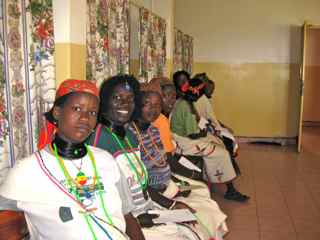Hailu A, D. Economic evaluation of malaria prevention in Ethiopia: Economic burden, equity, and cost-effectiveness analysis of malaria prevention in south-central Ethiopia [PhD]. Bergen: University of Bergen; 2018.
Summary
Background: Despite remarkable efforts in the global fight against malaria and achievements in the reduction of morbidity and mortality in the last decade, the disease remains to be a huge challenge to the health systems of malaria-endemic low-income countries in Africa and in all corners of the globe. Beyond the wide range of consensus on the disease burden and prioritization of malaria, the available evidence on the economic burden of malaria in Ethiopia is scanty. No clear evidence yet exists about the additional resources required for a combined implementation of long-lasting insecticidal nets (LLINs) and indoor residual spraying (IRS) with respect to the added protection afforded. In addition, little is known about the prevailing status of LLINs and IRS across different levels of wealth strata.
Objectives: The aims of this thesis were to estimate the economic burden of malaria; to evaluate the cost-effectiveness of a combined implementation malaria prevention interventions (LLINs and IRS); and analyse the distributional (equity) implications of the interventions in the Adami Tullu district, south-central Ethiopia.
Methods: Studies included in this thesis were conducted from 2014 – 2016 in the Adami Tullu district of Oromia Region, in south-central Ethiopia as part of and partly in conjunction with the MalTrials project. We conducted a cost of illness using 190 malaria patients in the first study. In Paper II, we carried out a combination of trial-based and literature-based cost-effectiveness analysis using Markov modelling. In the third study, using a cross-sectional data from 6069 households we did an inequality analysis of ownership of LLINs and IRS status. The principal component analysis technique was used for ranking households based on socioeconomic position. We measured the inequality in LLINs and IRS using concentration indices and concentration curve (Paper I&III).
Results: The median cost of malaria per episode to the household was USD 5.06 (IQR: 2.98 – 8.10) and the direct cost was significantly higher among the poor. The trial-based analysis had shown that the routine practice dominates both the combined intervention and singleton intervention while the literature-based analysis had indicated that combined intervention had an Incremental Cost-Effectiveness Ratio of USD 1403 per DALY averted. Immediately before we started the trial, the LLIN ownership was 11.6% and IRS coverage was 72.5%. We found a concentration index of 0.0627 for LLINs and – 0.0383 for the IRS. Inequality in LLIN ownership was mainly associated with a variability in a housing situation, the size of the household, and access to mass media and telecommunication service.
Conclusions: The economic burden of malaria to the rural households in Ethiopia is huge—mainly to the poor. Based on the trial-based cost-effectiveness analysis, we conclude that the combination of LLINs and IRS is not likely to be a cost-effective option compared with singleton intervention. However, based on the literature-based analysis, the combined intervention had potential to be a cost-effective alternative at 3 times GDP per capita per DALY averted. Furthermore, the ownership of LLIN was very low and significantly pro-rich, while IRS status was equitable across socioeconomic strata.

 There are unfortunately many hospitals in Ethiopia and in Africa that do not work as expected. They lack staff, or equipment. Often they lack staff doing essential interventions such as caesarean sections.
There are unfortunately many hospitals in Ethiopia and in Africa that do not work as expected. They lack staff, or equipment. Often they lack staff doing essential interventions such as caesarean sections.